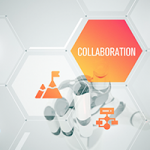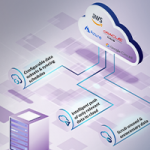Introduction
In today’s increasingly complex semiconductor industry, companies are always looking for new and innovative ways to maximize the value of their Intellectual Property (IP) assets. One way to do this is through the use of crowdsourcing and gamification. Crowdsourcing is the process of obtaining services, ideas, or content by enlisting a large number of people, typically through an online platform. Gamification is the use of game design elements and game principles in non-gaming contexts, such as education or business. By combining these two powerful strategies, semiconductor companies can create an environment that encourages IP reuse and encourages collaboration between different departments and teams. This article will discuss how crowdsourcing and gamification can improve semiconductor IP reuse and provide examples of how companies have successfully implemented these strategies.
Design teams have long hailed the use and reuse of Semiconductor Intellectual Property (SIP) as the next breakthrough in design team productivity. Several 3rd party SIP vendors have cropped up to provide SIPs for standard parts. The SIP market is estimated to be US$6 billion in 2022. However, reusing SIPs developed in-house have lagged, effectively duplicating significant engineering effort. Most mid and large semiconductor companies have multiple design centers and business units. Many semiconductor companies grow inorganically through acquisitions. Often, there is limited collaboration between the design centers and development happens in silos. The same or similar SIPs are likely being developed and used by multiple design groups in the enterprise. It is even likely that a 3rd party SIP or a similar SIP may unknowingly be licensed at numerous design centers.
The reason for the lack of collaboration or reuse may be manifold:
- Tools and rules have not been established to share and effectively reuse SIPs.
- There is no strong mandate from management to require reuse.
- The quality of a SIP developed in-house is unknown.
- Publishing a SIP is centralized, causing backlogs and delays.
- There are no incentives for engineers to publish their SIP, and engineers may be averse to sharing, expecting to spend time answering queries.
The internet has shown how effectively we can leverage the collective intelligence of the masses. We rely on reviews and insights from others to decide what products to buy, what restaurants to dine in, where to stay on our vacation, and what to watch on our staycation. The once revered compendium of knowledge, the Encyclopedia Britannica, has become a relic of the past, thanks to the vastly larger and constantly updated knowledge, crowdsourced by Wikipedia. Gamification and ratings help us gauge the quality of a seller or Amazon or eBay and the trust we can place on a solution offered on Stack Overflow. When you mark a review as helpful it encourages the author to contribute more. The quest for badges and recognition from peers makes Stack Overflow such a vibrant and useful forum. These techniques of crowdsourcing and gamification works equally well to increase the supply of SIPs and the demand for reuse in any organization.
Crowdsourcing
For collaboration across design centers, it is essential to have a SIP catalog that designers can access in all locations. It has to be easy to browse and search with the ability to filter results to match criteria such as technology node and foundry. You will also need to compare SIPs easily when multiple options are available.
Most importantly, we have to populate the catalog with a large number of quality SIPs. No one wants to shop in a store with empty shelves or low-quality products. The fastest way to stock the shelves is to leverage the crowd. Encourage all engineers to publish their SIPs instead of managing the catalog using a central authority such as a small group of SIP librarians. To maintain the quality of the SIPs, you also need to democratize the review and approval of SIPs before they are published.
Through crowdsourcing, Wikipedia has shown how to create a vast repository of high-quality articles. While anyone can publish or edit an article, peers also review it for accuracy. A similar method could work well for a catalog on SIPs. Make it easy for any engineer to publish a SIP but use custom workflows to ensure quality. Different criteria may be used to run workflows, so the right checks are done for the type of SIP being published. The workflow may invoke automation to determine if the SIP follows some agreed-upon standards and has the required information, such as test benches, datasheets, or verification results. Other steps in the workflow may require a technical expert to review the SIP for merit or management to approve or restrict who can access the IP.
With crowdsourcing both the authorship and review of SIPs, you can expect to grow the catalog with quality SIPs quickly, provided you can also incentivize engineers to contribute.
Gamification
While tools and methods can enable engineers to share their IP, there still needs to be incentives to make them want to do it, at least until there is a critical mass of IPs in the catalog and SIP reuse becomes a routine practice in the organization. Management can undoubtedly encourage this behavior through monetary incentives and mandates. A combination of both carrots and sticks can help change the reuse culture resulting in significant productivity gains for the enterprise.
Another no cost and sustainable way to encourage participation is by gamifying the system. People are motivated by recognition and competition. People gain an innate satisfaction from knowing that their contribution is being used by others. You should deploy a solution that lets engineers realize the value they are creating and build an environment of friendly competition.
eCommerce sites benefit from consumers providing useful feedback about the product. Most sites such as Amazon allow others to give a thumbs up or mark a review as helpful. This incentivizes the author to give more and better reviews for future purchases. The eCommerce site merely helped satisfy the user that their contribution was appreciated by others. If you track who is using a SIP, that information can be displayed, providing satisfaction and future encouragement to the authors of the SIP. It also provides several other benefits. It allows the authors to communicate helpful information to the users. Information could be tips on integrating the SIP, alerts on any issues found, or notifications of new releases. It could also serve as a cue for other engineers in the organization looking for a similar SIP. Higher reuse would imply that it has been production tested and has a larger community of users who can help provide guidance if needed. Additionally, management can generate reports to measure the level of reuse and get some sense of the return on investment in the reuse system. Perhaps one could also have a rating system allowing users to rate the quality of a SIP. Such a rating system would work well for 3rd party SIPs but may not be feasible for in-house SIPs published by other colleagues.
The pursuit of status is a very human trait. Sites such as Stack Overflow have borrowed the idea of merit badges to award people for their contribution to the community. Just as merit badges encourage boy scouts to master an activity, the quest for Stack Overflow badges can encourage a software engineer to participate more. A gamification you could employ is to assign points for engagement. Publishing a SIP would be worth X points, someone using your SIP could garner Y points and replying to a question posted by another engineer would get you Z points. The points would get aggregated to assign a status. Most engineers are inherently competitive, which would help them strive to contribute more to the system. Increased contribution means a larger portfolio of SIPs and expertise in the system making it more valuable and resulting in a self-sustaining ecosystem. This ecosystem will also help engineers be recognized as thought leaders for their contributions and expertise beyond their design team and design center. The recognition increases their professional value, can open new doors, and expose them to new opportunities in the organization.
Conclusion
Large and midsize semiconductor companies are not fully leveraging the expertise spread across the organization. The same wheel is often being invented and developed independently in different design centers. An ecosystem built to share IPs and expertise can help significantly improve efficiency. For the ecosystem to be sustainable it needs to be seeded and tended to. Crowdsourcing and gamification with a healthy interest from management can make this a reality that can turbocharge productivity. Thought leaders in any organization are always looking for ways to improve productivity. Deploying a system that enables crowdsourcing and gamification of SIPs and having the patience to grow it to a self-sustaining ecosystem of IP reuse can be a game changer for the organization.




